This was originally posted in September 2018
Doug Soldat, Extension Turfgrass and Urban Soil Specialist
Department of Soil Science
UW-Madison College of Agricultural and Life Sciences
djsoldat@wisc.edu
(608) 263-3631
Total Time – 3:07
0:13 – Lawns affected by flooding
0:38 – Indications of damaged lawns
1:00 – Fall lawn maintenance to-do list
1:34 – Keep mowing
2:01 – Bag or rake lawn clippings?
2:14 – Removing fallen leaves
2:42 – Mulch leaves instead of raking
2:56 – Lead out
TRANSCRIPT
Lorre Kolb: Lawn care tips for the fall. We’re visiting today with Doug Soldat, Extension Turfgrass and Urban Soil Specialist, Department of Soil Science, University of Wisconsin-Madison in the College of Agricultural and Life Sciences and I’m Lorre Kolb. Doug, we’ve had a lot of rain and flooding across the state, how does this excessive water affect lawns?
Doug Soldat: Well the good news is it probably won’t have a long-term negative effect for most areas. So our main grass in the state, Kentucky Blue Grass, can handle relatively long periods of time being submerged which will give the water time to drain away and then the grass – even if it’s damaged – will usually grow back.
Lorre Kolb: Is there anything that would indicate a damaged lawn?
Doug Soldat: There’s no cutoff for the length of time the grass can tolerate. It depends on the soil conditions, the condition of the grass when it became flooded, the temperature of the water, the amount of sunshine, so a lot of things can influence it, but if your grass that has been underwater is black and soft and mushy, it’s likely not coming back. But if there’s any hint of green or white in the canopy it’s likely going to grow back just fine.
Lorre Kolb: What are some things people can do now, in the fall, to work on their lawns?
Doug Soldat: Yeah, that’s right, so most people by this time, they’re sick of doing lawn maintenance, but it’s actually the best time. It’s the best time to put down a fertilizer to thicken the grass up and get it ready to go into winter and be ready to green up next spring. It’s the best time to control weeds and it’s also the best time to re-seed, to grow grass in some of the thin areas. So those are all things you should be thinking about now up until the end of September.
Lorre Kolb: And as far as mowing lawns, people should keep doing that?
Doug Soldat: Yes, mowing is the most important practice we do to our lawns. And good mowing practices can make a world of difference in how nice your lawn looks, so the recommendations are to mow as high as possible – 3 to 3 ½ inches with a sharp mower blade and don’t remove more than a third of the tissue at a time. If you’re scalping the lawn or removing a lot of the tissue, it’s bad for the lawn.
Lorre Kolb: So leave grass clippings on or bag them?
Doug Soldat: Definitely leave your grass clippings on the lawn. It serves as an equivalent to a fertilizer application. If you take them off, you’re removing nitrogen from the system.
Lorre Kolb: What should people do about the leaves that fall on their lawns?
Doug Soldat: Yeah, that’s a good point. So, especially for shady areas where the trees are, fall is one of the few times that shady areas have to absorb the light, so get those leaves off the grass itself and then the sun will penetrate through the trees that have lost the leaves and give the turf the sunshine it needs to make sugars and make a deeper root system. If you leave the leaves on the grass, it’s even worse than shade because the sunlight doesn’t reach the blades.
Lorre Kolb: So what about mulching leaves?
Doug Soldat: You can mulch your leaves. Instead of removing them you can mulch them into the canopy and some research from Michigan State has been showing that if you do that it actually reduces your weed populations as well, so that is probably the best way to go.
Lorre Kolb: We’ve been visiting with Doug Soldat, Extension Turfgrass and Urban Soil Specialist, Department of Soil Science, University of Wisconsin-Madison in the College of Agricultural and Life Sciences and I’m Lorre Kolb.



